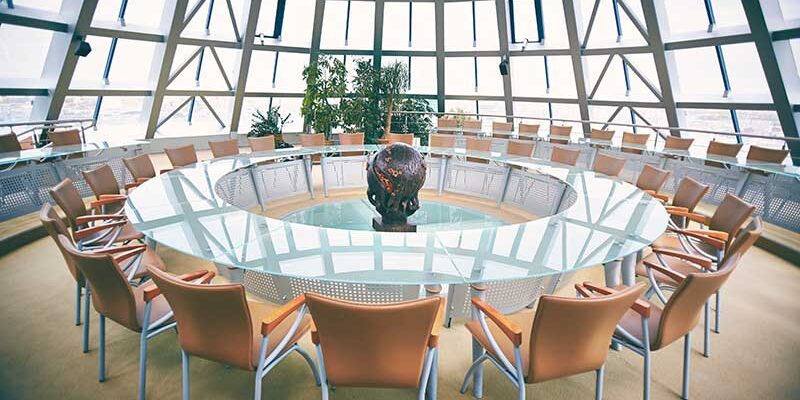Glass tables are a popular choice for individuals who want to lend an air of elegance and sophistication to their living areas. Aside from its sleek appearance, the process of creating glass tables requires precise processes and expertise to assure longevity and beauty. In this blog post, we will look at the many techniques used in glass table manufacture, with an emphasis on different types of glass and the cutting, shaping, and finishing processes.
Types of glass used in table manufacturing
- Tempered glass is one of the most popular forms of glass used for tabletops. Tempered glass, known for its strength and safety, is made by heating normal glass to a high temperature and then rapidly cooling it. This process, known as tempering, strengthens the glass to withstand impact and heat stress. When shattered, tempered glass shatters into small, blunt fragments that are less likely to injure, making it an excellent choice for furniture.
- Frosted glass has a lovely, translucent finish achieved through the process of sandblasting or acid etching. This type of glass is ideal for providing seclusion while yet allowing light to travel through, making it a popular choice for dining tables and workplaces where direct visibility may be undesirable.
- Beveled Glass is distinguished by its exquisite edges that are cut at an angle to create a prism-like appearance. The beveling procedure improves the glass’s aesthetic appeal by providing a refractive characteristic that collects and reflects light wonderfully. Beveled edges are commonly utilized in decorative tables and can lend a touch of elegance to any situation.
The Manufacturing Process
- The production process for glass tables begins with cutting the glass to the correct size. This is usually done with a glass cutter or a CNC (computer numerical control) machine for more intricate shapes. Precision is essential during this stage to ensure that the measurements are correct and the edges are tidy.
- Shaping: Following cutting, the glass edges are curved and refined. For tables with curved or complicated edges, reheat the glass and lay it in a mold. Grinders and sanders are also used to shape edges and create decorative finishes like bevels.
- Finishing: The final step is to finish the glass surface and edges to ensure safety and aesthetic appeal. This may include polishing the edges for a smooth finish and applying dyes or coatings to generate desired effects such as frosting. Additional treatments can be used to increase the durability and resistance to scratches and stains.
- Quality control is required at all stages of the manufacturing process. Each piece of glass is checked for flaws such as chips, cracks, and uneven surfaces. The adherence to safety regulations, particularly when creating tempered glass, is closely regulated.
The appeal of a glass table stems not only from its clear, reflective surface, but also from the intricate manufacturing process that goes into creating each piece a safe and appealing addition to any home. Understanding the many types of glass and the careful methods of cutting, shape, and finishing allows consumers to appreciate the artistry involved in creating these magnificent pieces of furniture.
Whether you are a designer, manufacturer, or a homeowner trying to make an informed purchase, knowing these details will help you select the best glass table that balances form and function.





